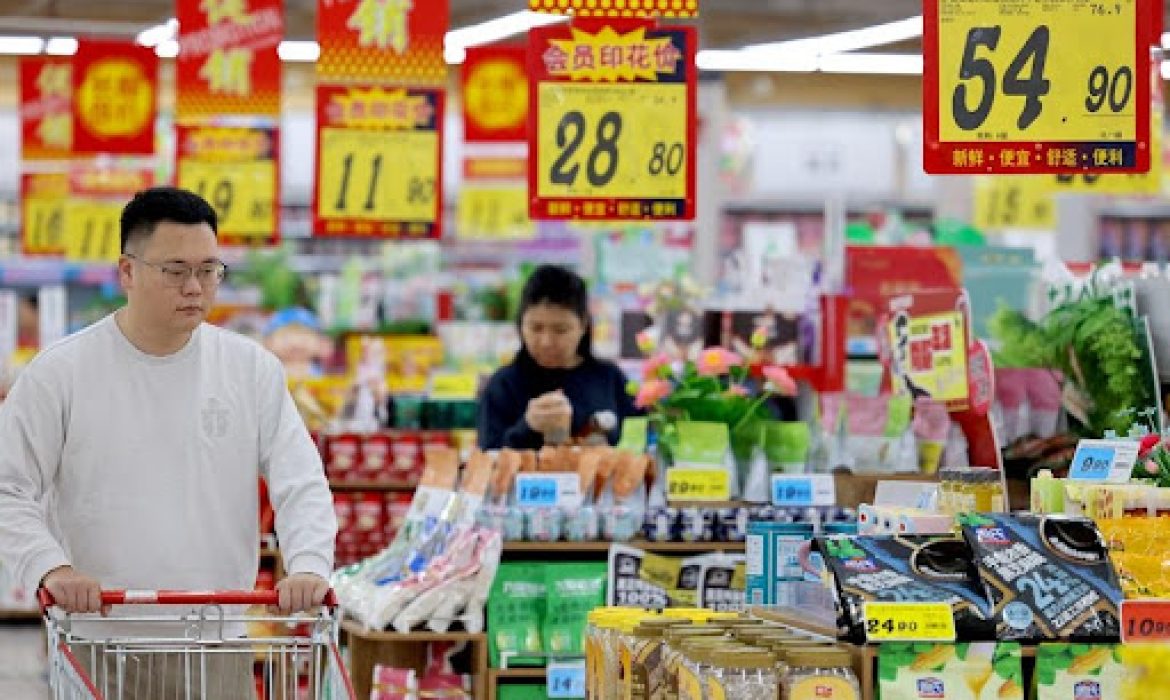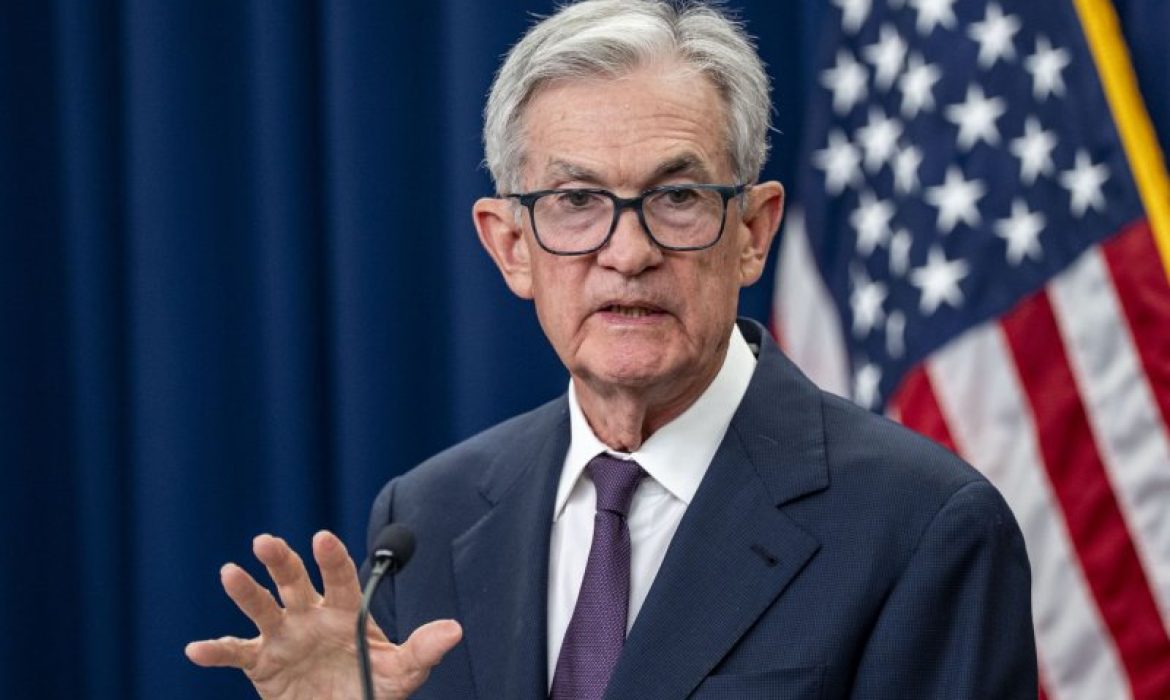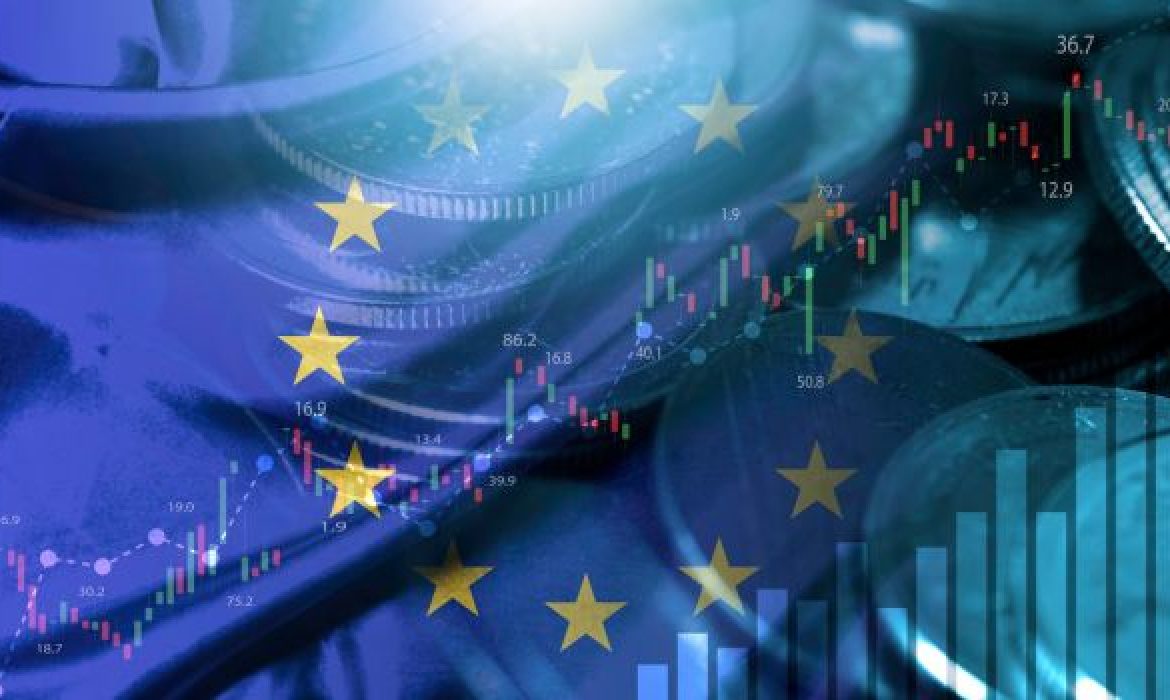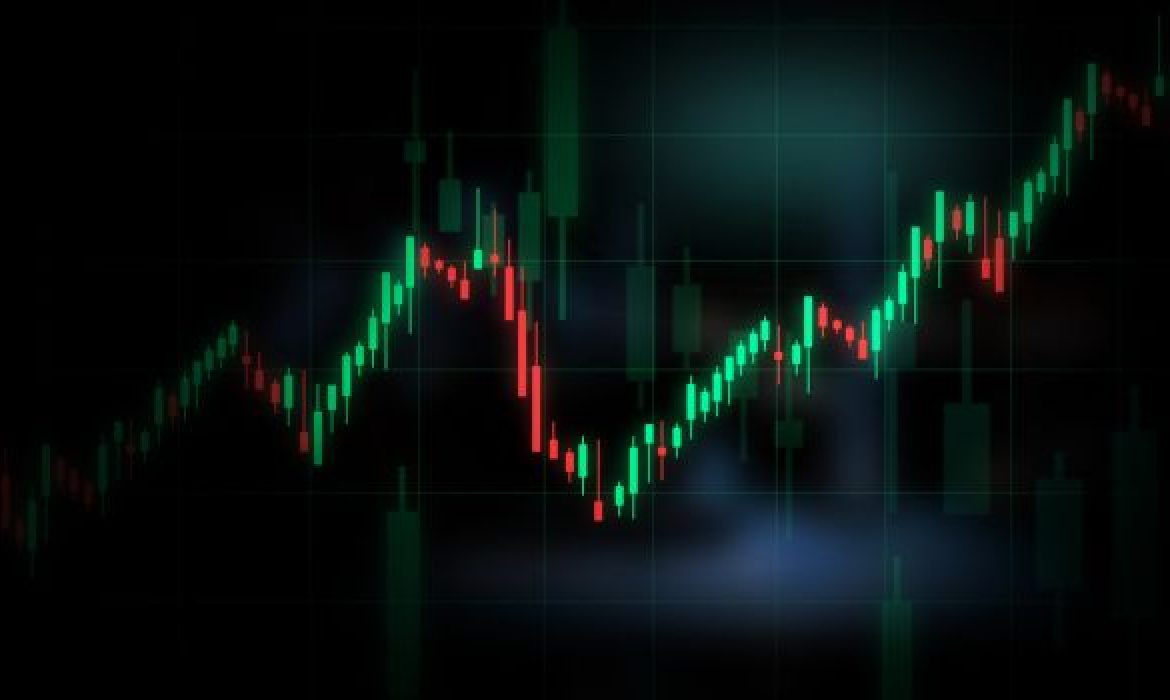Daily Synopsis of the Asia market close – December 15, 2025
Date Issued – 15th December 2025
Courtesy of the Research Department at Balfour Capital Group
Key Points
- Markets in Wait-and-See Mode: U.S. equity futures are steady as investors rotate out of mega-cap tech and brace for critical U.S. data on jobs, inflation and consumption that could recalibrate growth expectations and the Fed policy path.
- China’s Demand Drag: Weaker-than-expected Chinese retail sales, industrial output and fixed-asset investment underscore persistent domestic demand fragility, keeping pressure on policymakers to shift growth away from exports toward consumption.
- Copper Supply Shock: Copper prices are surging on tightening global supply, mine disruptions and U.S. tariff fears, reinforcing a structural deficit narrative driven by electrification, energy transition and data-center demand.
- Asia Risk-Off Tone: Asian equities slid as disappointing China data and a pullback in AI-linked stocks weighed on sentiment, with semiconductors leading declines despite pockets of resilience in Japan’s business outlook.
U.S. Futures Steady as Markets Brace for Key Economic Data
U.S. stock futures were little changed at the start of the week, reflecting cautious investor sentiment after a mixed period marked by a rotation out of large-cap technology and into lower-valuation sectors. Futures tied to the S&P 500 and Nasdaq edged modestly lower, while Dow futures were slightly higher, extending last week’s divergence in performance.
The S&P 500 and Nasdaq declined as heavyweight tech names such as Oracle and Broadcom fell sharply, while the Dow gained on its lower exposure to AI-driven stocks. Attention now turns to a heavy slate of U.S. economic data, including delayed nonfarm payrolls, retail sales, and November CPI, which are expected to shape expectations around growth, inflation, and the policy outlook.
China Data Misses Highlight Persistent Demand Weakness
China’s economic slowdown deepened in November as key activity indicators broadly missed expectations, reinforcing concerns over weak domestic demand. Retail sales growth slowed sharply to 1.3% year-on-year, less than half of forecasts, while industrial production rose 4.8%, its weakest pace since August. Fixed-asset investment contracted 2.6% over the first 11 months of the year, marking the steepest decline since 2020, driven by a prolonged property slump and falling home prices.
While policymakers have pledged additional fiscal support, including special bond issuance and trade-in programs, economists remain cautious, citing weak job prospects, subdued wage growth and fragile consumer confidence. Export strength has helped keep China on track for its annual growth target, but reliance on external demand underscores the urgency of rebalancing toward consumption-led growth.
Copper Rally Accelerates on Tariff Fears and Supply Strain
Copper prices have surged to record levels, driven by tightening supply and growing concerns over potential U.S. tariffs on refined copper imports. Spot prices on the London Metal Exchange have climbed about 36% this year, with analysts at Citi projecting prices could reach $13,000 per ton in early 2026 and potentially $15,000 later in the year.
The rally has been amplified by heavy inflows of copper into the U.S., where higher domestic prices have encouraged stockpiling and drained inventories elsewhere. Persistent mine disruptions, downgraded production forecasts from major producers, and falling exchange inventories are reinforcing expectations of a market deficit into early 2026. While demand from energy transition and data-center expansion remains strong, analysts caution that elevated prices may pressure margins across energy-intensive industries.
Asia Markets Slide as China Data Weighs on Sentiment
Asia-Pacific equities declined as investors digested weaker-than-expected economic data from China and extended a pullback from AI-linked stocks seen in U.S. markets. South Korea led losses, with the Kospi falling over 2% as heavyweight chipmakers SK Hynix and Samsung Electronics dropped sharply.
Japan’s Nikkei also retreated despite improved business confidence, with the Bank of Japan’s Tankan survey showing large manufacturers’ optimism at a four-year high. Hong Kong stocks slipped after China’s retail sales and industrial output missed forecasts, reinforcing concerns over soft domestic demand. The cautious tone followed a broad sell-off on Wall Street, where technology and AI-related shares dragged major indices lower.
Conclusion
Global markets are entering a more cautious phase as investors reassess growth momentum, policy trajectories and sector leadership. In the U.S., attention is firmly on upcoming economic data to validate expectations for a soft landing amid ongoing rotation away from crowded technology trades.
China’s weaker activity data continues to act as a drag on regional and global sentiment, reinforcing concerns around demand sustainability. At the same time, structural supply constraints in commodities such as copper highlight longer-term inflationary and margin pressures. Collectively, these dynamics point to heightened selectivity, increased volatility and a greater premium on macro resilience across asset classes.
Investment Insights
- Position for Rotation, Not Reversion: Ongoing rotation away from mega-cap tech toward cyclicals, defensives and value-oriented sectors suggests opportunities in diversified industrials, financials and quality small- to mid-caps.
- China Exposure Requires Selectivity: Weak domestic demand argues for caution on broad China-linked equities, with relative preference for exporters, state-backed infrastructure plays and firms aligned with targeted fiscal support.
- Commodities as a Structural Hedge: Copper’s supply-driven rally reinforces the case for selective exposure to energy-transition metals and low-cost producers as a hedge against longer-term inflation and capex cycles.
- Manage Volatility Proactively: With key macro data and policy signals pending, portfolios should emphasize balance—combining defensives, real assets and selective growth to navigate near-term volatility without sacrificing upside.
Economic Calendar
| Date | Event | Why It Matters |
|---|---|---|
| Dec 15, 2025 | China Retail Sales (YoY) | Provides a direct read on consumer demand and confidence, shaping Asia market sentiment and global cyclical exposure. |
| Dec 15, 2025 | China Industrial Production & Fixed Asset Investment | Assesses manufacturing momentum and capex trends, with implications for commodities, exporters and global growth outlook. |
| Dec 16, 2025 | U.S. S&P Global Flash PMIs | High-frequency indicators of economic activity that can quickly reprice interest rates, equities and the U.S. dollar. |
| Dec 16, 2025 | U.S. Nonfarm Payrolls | A critical gauge of labor-market strength, influencing Federal Reserve policy expectations and global risk appetite. |
| Dec 18, 2025 | U.S. CPI (YoY) | The key inflation release for markets, capable of driving volatility across bonds, equities and currencies. |
| Dec 18, 2025 | ECB Interest Rate Decision | Determines eurozone monetary conditions and affects European assets, FX markets and global rate spillovers. |
| Dec 19, 2025 | Bank of Japan Interest Rate Decision | Highly influential for yen direction and global carry trades, with potential ripple effects across bond markets. |
Disclaimer: This newsletter provides financial insights for informational purposes only. It does not constitute financial advice or recommendations for investment decisions.
Daily Synopsis of the New York market close – December 12, 2025
Date Issued – 12th December 2025
Courtesy of the Research Department at Balfour Capital Group
Key Points
- Market Leadership Shifts: U.S. equities are being driven by sector rotation, with financials and industrials hitting 52-week highs and small-cap stocks outperforming, while airlines and semiconductors extend gains, underscoring resilient risk appetite despite uneven index-level performance.
- OpenAI’s Trillion-Dollar Bet: OpenAI’s evolution from nonprofit lab to a $500 billion AI powerhouse highlights the scale of capital flooding into artificial intelligence, with hyperscalers and chipmakers aligning multi-year investment plans even as valuation, cash burn and competitive risks intensify.
- U.S. AI Policy Reset: President Trump’s executive order establishing a single national AI regulatory framework reduces state-level oversight, offering regulatory clarity and flexibility for U.S. tech firms as they scale AI innovation amid global competition.
- India’s Asset Management Boom: India’s mutual fund industry is projected to reach $3.3 trillion by 2035, driven by young retail investors and strong domestic liquidity, drawing renewed interest from global fund houses and reinforcing India’s role as a key growth market for capital formation.
U.S. Market Movers: Sector Rotation and Earnings Set the Tone
U.S. equities saw pronounced sector rotation as financials and industrials hit 52-week highs, outpacing the broader S&P 500’s 17% year-to-date gain. Small caps continued to lead with the Russell 2000 up 2.7% this week, while materials emerged as the top-performing sector despite trailing over the past quarter.
Company-specific moves also shaped sentiment: Lululemon rallied after announcing its CEO’s departure, Broadcom slid despite strong earnings and upbeat AI guidance, and airline stocks reached new highs amid broad December strength. Semiconductor momentum remained strong, with the SMH ETF up 53% this year, reflecting persistent demand for AI-linked hardware.
OpenAI at 10: From Nonprofit Lab to Trillion-Dollar Battleground
OpenAI’s transformation from a small nonprofit into a $500 billion AI powerhouse has reshaped the global tech landscape, with its rapid scale fueling massive capex commitments from Oracle, AMD, Broadcom and Nvidia. As Sam Altman and Elon Musk—now rivals through OpenAI and xAI—compete for leadership in a trillion-dollar market, the sector faces unprecedented infrastructure demands, rising to an estimated $1.4 trillion for OpenAI alone.
Skyrocketing compute needs, escalating model competition and investor scrutiny over sustainability are defining a new era in AI, with hyperscalers betting that extreme demand will justify extraordinary spending trajectories and valuations.
Trump Moves to Centralize AI Rules With Single Federal Framework
President Trump signed an executive order establishing a unified national framework for artificial intelligence regulation, curbing the authority of individual states and reinforcing federal preemption in AI oversight. The move, backed by the White House’s AI leadership and prominent tech investors, is seen as a win for major AI developers that argue fragmented state rules would hinder innovation and global competitiveness.
The order directs the Justice Department to challenge state-level AI laws and links compliance to eligibility for certain federal funding programs. Markets and industry participants view the decision as reducing regulatory uncertainty for large AI players, while intensifying debate over governance, oversight and state autonomy.
India’s $3.3 Trillion Fund Opportunity Draws Global Asset Managers
India’s rapidly expanding retail investor base is reshaping its capital markets, with mutual fund assets projected to reach $3.3 trillion by 2035, driven by salaried millennials and Gen Z investors embracing long-term investing. The deepening financialization of household savings has reignited interest from global asset managers, highlighted by BlackRock’s return to the Indian mutual fund space and growing overseas participation in local IPOs.
Strong domestic liquidity continues to absorb large listings at premium valuations, while systematic investment plans and equity-focused funds gain traction. As India’s market depth and investor sophistication increase, global fund houses see rising opportunities across asset management, primary markets and overseas investment channels.
Conclusion
Today’s developments highlight a market environment defined by structural growth themes and selective risk-taking. Equity leadership continues to rotate toward financials, industrials and small caps, reflecting confidence in underlying economic momentum despite pockets of volatility.
At the same time, artificial intelligence remains a dominant force, with massive capital commitments, shifting regulatory frameworks and intensifying competition shaping the outlook for technology and infrastructure investors. Beyond the U.S., India stands out as a long-duration growth story, with deepening financial markets and rising retail participation attracting global capital.
Together, these trends underscore a market increasingly driven by policy direction, capital allocation discipline and regional growth divergence.
Investment Insights
- Market Rotation Signals: Strength in financials, industrials and small caps suggests investors are favoring cyclical exposure and balance-sheet leverage to economic resilience; portfolios may benefit from selective participation in sectors with earnings momentum rather than broad index exposure.
- AI Scale vs. Discipline: OpenAI’s trillion-dollar infrastructure ambitions underscore the size of the AI opportunity but also the risks of capital intensity; investors should differentiate between ecosystem beneficiaries with pricing power and those exposed to rising leverage and uncertain returns.
- Regulatory Clarity for AI: A unified U.S. AI framework reduces compliance risk and favors large, well-capitalized tech platforms; policy stability may support long-term investment but could also entrench incumbents.
- India Long-Term Growth: India’s expanding retail investor base and deepening capital markets strengthen its appeal as a structural growth allocation; focus on asset managers, exchanges and companies positioned to absorb sustained domestic liquidity.
Economic Calendar
| Date | Event | Why It Matters |
|---|---|---|
| Dec 11, 2025 | U.S. Initial Jobless Claims & Trade Balance | Weekly labor and trade data offer timely insight into U.S. demand and labor-market dynamics, influencing Fed expectations and risk sentiment. |
| Dec 11, 2025 | 30-Year U.S. Treasury Auction | Outcomes help shape the Treasury yield curve, affecting fixed-income valuations and borrowing costs. |
| Dec 12, 2025 | Eurozone Final Inflation (Nov) | Confirming inflation trends influences ECB policy expectations and euro market pricing. |
| Dec 14, 2025 | China Retail Sales & Activity Data | China’s consumer demand indicators provide key insights on domestic growth and policy effectiveness. |
| Dec 15, 2025 | U.S. Nonfarm Payrolls & Unemployment | Headline U.S. employment data remain critical for Fed policy direction and global risk sentiment. |
| Dec 15, 2025 | U.S. Retail Sales (Nov) | Consumer spending data directly impacts GDP forecasts and corporate earnings outlooks. |
| Dec 16, 2025 | Australia Westpac Consumer Sentiment | Confidence data gauge domestic demand pressures and RBA policy implications. |
Disclaimer: This newsletter provides financial insights for informational purposes only. It does not constitute financial advice or recommendations for investment decisions.
Daily Synopsis of the New York market close – December 11, 2025
Date Issued – 11th December 2025
Courtesy of the Research Department at Balfour Capital Group
Key Points
- Fed’s Hawkish Cut: The Federal Reserve delivered a quarter-point rate cut but signaled a slower path ahead, with a rare three-way dissent and projections showing only two additional cuts through 2027, reinforcing a more constrained policy outlook despite a positive market reaction.
- Asia Markets Reverse: Asia-Pacific equities surrendered early gains as investors digested the Fed’s cautious tone, with major indices in Japan, South Korea and China turning lower while a softer U.S. dollar and falling Treasury yields shaped regional trading dynamics.
- Oracle’s AI Setback: Oracle shares plunged 11% after missing revenue expectations, triggering weakness across AI-related stocks as investors questioned the sustainability of its aggressive cloud and AI infrastructure spending amid rising capex, negative free cash flow and heavier debt loads.
- Energy Outperformers: Goldman Sachs highlighted strong but underappreciated gains in Ceres Power, Vestas Wind Systems and SSE, driven by licensing deals, robust earnings, and major investment commitments, underscoring renewed momentum in clean energy and power infrastructure names.
Fed Delivers Divided ‘Hawkish Cut’ as Policy Path Narrows
The Federal Reserve approved a widely expected quarter-point rate cut to 3.5%–3.75%, but deep internal divisions signaled a slower path ahead for easing. In a rare 9–3 split vote, dissenting members pushed both for no cut and for a larger reduction, underscoring uncertainty over inflation progress and labor-market resilience. Updated projections showed only one additional cut expected in 2026 and another in 2027, while inflation is still not seen returning to 2% until 2028. The Fed also announced it will resume Treasury purchases, starting with $40 billion in T-bills, citing funding-market pressures. Markets initially welcomed the move, with equities rising and yields drifting lower, though the cautious tone reinforced expectations for a more restrained policy trajectory ahead.
Asia-Pacific Markets Slip as Investors Digest Fed’s Third Cut and Cautious Tone
Asia-Pacific equities turned lower after initially rising, as markets reacted to the Federal Reserve’s third rate cut of 2025 and Chair Jerome Powell’s signal that further easing is unlikely in the near term. The Fed lowered rates to 3.5%–3.75% and announced plans to resume $40 billion in Treasury bill purchases, a move that pushed short-term yields lower and weakened the U.S. dollar to its softest level since late October. The Nikkei, Kospi and Topix all reversed early gains, while Hong Kong’s Hang Seng edged higher and China’s CSI 300 slipped. Sentiment was also pressured by a report that ZTE may face a $1 billion U.S. penalty, weighing on Chinese tech shares. Overnight, U.S. markets closed firmly higher following the Fed decision, led by a 1.1% jump in the Dow.
Oracle Shares Tumble as Revenue Miss Sparks Selloff Across AI Stocks
Oracle plunged 11% after quarterly revenue narrowly missed expectations, overshadowing strong earnings and surging AI-related demand. The shortfall raised concerns over whether the company’s aggressive cloud and AI infrastructure buildout—funded by rising debt and sharply higher capital expenditures—can sustain long-term returns. Despite securing major commitments from Meta, Nvidia, OpenAI and others, investors reacted to weaker software revenue, negative free cash flow of $10 billion, and a full-year capex outlook that jumped to $50 billion. The disappointment weighed on semiconductor and AI infrastructure names, including Nvidia, AMD and CoreWeave, highlighting heightened sensitivity to signs of slowing monetization across the AI supply chain.
Goldman Flags Underappreciated Energy Winners Amid Strong November Outperformance
Goldman Sachs highlighted a group of outperforming yet underrecognized energy names in November, citing strong catalysts across clean-tech and power infrastructure. Ceres Power jumped 38% after signing a major licensing deal with Weichai Power, with analysts viewing the company as an underappreciated beneficiary of rising datacenter and AI-driven energy needs. Vestas Wind Systems climbed 16% on robust third-quarter results, strong cash generation and a new buyback program, with Goldman expecting continued upside as tariff and cost-related headwinds fade. SSE gained nearly 15% after unveiling a £33 billion investment plan that boosted visibility and regulatory confidence, though the stock was later removed from Goldman’s Conviction List.
Conclusion
Market sentiment remains cautious as investors weigh the Fed’s divided “hawkish cut,” signaling a slower and more uncertain policy path heading into 2026. Asia-Pacific equities reflected this hesitation, reversing early gains despite a softer dollar and easing bond yields. Corporate news added further complexity: Oracle’s sharp selloff raised questions about the durability of AI-infrastructure spending, while Goldman’s highlighted energy outperformers showed strength in parts of the clean-tech ecosystem. Together, these developments point to an environment where selective positioning, disciplined risk management and careful attention to policy signals will be essential for navigating the weeks ahead.
Investment Insights
- Policy-Driven Volatility: The Fed’s divided “hawkish cut” underscores a narrower and more uncertain easing path; investors should maintain flexible duration exposure and avoid overcommitting to a rapid normalization narrative.
- Asia Allocation Discipline: The post-Fed pullback across Asia highlights sensitivity to U.S. policy signals; balanced regional positioning remains prudent as currencies, yields and growth expectations recalibrate.
- AI Infrastructure Scrutiny: Oracle’s revenue miss reveals growing investor sensitivity to AI-capex sustainability; prioritize companies with clear monetization pathways, stable balance sheets and diversified AI demand rather than aggressive build-out stories alone.
- Clean-Energy Selectivity: Goldman’s highlighted winners show that overlooked energy and clean-tech names can outperform on strong fundamentals; selective exposure to firms with credible contracts, regulated visibility or operational momentum may enhance portfolio resilience.
Economic Calendar
| Date | Event | Why It Matters |
|---|---|---|
| December 11, 2025 | U.S. Initial Jobless Claims | Weekly snapshot of U.S. layoffs and hiring momentum, shaping views on labor-market resilience and the path of Fed |
| December 11, 2025 | U.S. Trade Balance | Key indicator of U.S. external demand and dollar flows, feeding into GDP tracking and global trade sentiment. |
| December 11, 2025 | IEA & OPEC Monthly Oil Market Reports | Updated supply–demand outlooks for crude that influence energy prices, inflation expectations and commodity-linked assets. |
| December 11, 2025 | U.S. 30-Year Treasury Bond Auction | Long-term yield outcome guides market views on fiscal risk, duration appetite and valuation for global fixed income. |
| December 12, 2025 | U.K. GDP and Trade Data (October) | Offers a read on U.K. growth momentum and external balances, shaping Bank of England expectations and sterling sentiment. |
| December 12, 2025 | Eurozone Inflation (November, Final) | Confirms the euro area inflation trajectory and informs markets on how quickly the European Central Bank can adjust rates. |
| December 12, 2025 | China Credit & Money Data (TSF, M2, New Loans) | Tracks the strength of China’s credit impulse and liquidity, a key driver for domestic activity and global commodity demand. |
| December 15, 2025 | U.S. Nonfarm Payrolls & Unemployment Rate | Flagship report on U.S. labor conditions that can shift expectations for future Fed moves and broader risk appetite. |
| December 15, 2025 | U.S. Retail Sales (October) | Core gauge of U.S. consumer spending, central to growth forecasts and earnings expectations for consumer-facing sectors. |
| December 16, 2025 | Australia Westpac Consumer Sentiment (December) | Measures Australian household confidence, offering clues on future consumption, housing activity and RBA policy sensitivity. |
Disclaimer: This newsletter provides financial insights for informational purposes only. It does not constitute financial advice or recommendations for investment decisions.
Daily Synopsis of the New York market close – December 10, 2025
Date Issued – 10th December 2025
Courtesy of the Research Department at Balfour Capital Group
Key Points
- Amazon’s India Bet: Amazon committed over $35 billion to expand India’s AI and cloud infrastructure through 2030, aiming to generate 1 million jobs, quadruple exports and accelerate AI adoption among millions of small businesses as global tech giants compete for leadership in the market.
- Nvidia’s China Catalyst: Analysts see strong long-term upside after President Trump approved Nvidia’s H200 chip sales to China, with revenue potential estimated at up to $3.5 billion per quarter despite remaining policy uncertainties and China’s parallel push for domestic semiconductor capacity.
- Fed’s Hawkish Cut Risk: Markets brace for a widely expected Fed rate cut that could come with hawkish guidance, as updated projections and Powell’s remarks may temper equity enthusiasm despite strong small-cap performance and mixed trading across major U.S. indices.
- Vietnam’s Market Surge: Vietnam’s stock market is among 2025’s top performers, driven by reforms, rising domestic participation and growing foreign investment, with its 2026 upgrade to emerging-market status expected to attract billions in new inflows and support continued long-term growth.
Amazon Commits $35 Billion to Accelerate India’s AI and Cloud Expansion
Amazon announced plans to invest more than $35 billion in India’s cloud and artificial intelligence infrastructure by 2030, deepening its long-term bet on one of the world’s fastest-growing digital markets. The commitment—unveiled at the Amazon Smbhav Summit—builds on nearly $40 billion already deployed and targets AI-led digitization, export growth and broad job creation. Amazon expects the initiative to generate 1 million jobs, quadruple exports to $80 billion and expand AI adoption among 15 million small businesses. The move follows Microsoft’s recent $17.5 billion investment pledge, underscoring intensifying competition among global tech giants to secure AI leadership in India.
Nvidia Gains U.S. Approval to Sell H200 Chips to China, Unlocking Major Revenue Potential
Nvidia’s share reaction was muted despite President Trump authorizing sales of its H200 AI chips to “approved customers” in China, as uncertainties remain over Chinese acceptance, congressional pushback and export-license details. Still, analysts broadly view the decision as a significant catalyst, citing the scale of China’s datacenter market and pent-up AI demand. JPMorgan expects the approval could restart China’s AI datacenter buildout, while Wolfe Research estimates Nvidia could generate roughly $3.5 billion in quarterly China revenues. With CEO Jensen Huang pointing to a $50 billion annual opportunity and several firms forecasting 40% upside, analysts see meaningful long-term potential despite near-term policy risks.
Fed Outlook Clouds Markets as Investors Brace for a Potential ‘Hawkish Cut’
U.S. equities were mixed ahead of an anticipated Federal Reserve rate cut, with traders assigning near-certainty to a 25-basis-point move but focusing instead on the tone of policymakers’ guidance. Markets expect the Fed to lower rates to 3.5%–3.75%, yet officials may signal a slower easing path through the updated dot plot and Chair Powell’s remarks—raising the risk of a “hawkish cut” that tempers year-end optimism. The Russell 2000 hit an intraday high even as the S&P 500 and Dow slipped, while global attention turned to Vietnam’s strong market rally and renewed scrutiny of China’s soybean purchases. Analysts also highlighted the potential lift to Nvidia from expanded China chip approvals, though uncertainty over Beijing’s demand persists.
Vietnam’s Market Rally Accelerates as Reforms, Capital Inflows and Demographics Drive Momentum
Vietnam’s stock market has surged in 2025, with the VanEck Vietnam ETF up roughly 62% and the VN Index climbing 38% year to date, outpacing both China and broader emerging markets. The rally reflects strengthened domestic participation, structural reforms and rising trade activity, while Vietnam’s upcoming upgrade to secondary emerging-market status in 2026 is expected to attract as much as $6 billion in new inflows. Although gains remain concentrated in a few real estate names, analysts see room for broader earnings growth next year. Robust foreign investment, a young workforce, and ongoing policy improvements continue to reinforce Vietnam’s long-term economic trajectory despite external trade and currency risks.
Conclusion
Global markets continue to navigate a landscape shaped by rapid technological investment, shifting policy signals and evolving regional growth stories. Amazon’s significant AI commitment in India underscores the escalating competition among global cloud leaders, while Nvidia’s conditional re-entry into China highlights both the opportunity and complexity of the semiconductor cycle. Investors are also closely watching the Federal Reserve, where a potential “hawkish cut” could recalibrate risk sentiment heading into year-end. Meanwhile, Vietnam’s accelerating market momentum reflects the power of structural reform and demographic strength. Together, these developments reinforce a market environment where policy, innovation and regional differentiation remain central to portfolio strategy.
Investment Insights
- India AI Expansion: Amazon’s $35 billion commitment reinforces India’s emergence as a global AI and cloud hub; investors should monitor opportunities in data centers, digital infrastructure and firms positioned to benefit from accelerating SME digitization.
- Semiconductor Policy Watch: Nvidia’s conditional return to China offers substantial revenue optionality but comes with policy volatility; chip exposure should balance near-term upside from reopened demand with risk controls around U.S.–China regulatory shifts.
- Monetary Sensitivity: A potential “hawkish cut” from the Fed highlights the need for disciplined rate-path expectations; portfolios may benefit from calibrated exposure to rate-sensitive sectors while avoiding overreliance on a rapid easing cycle.
- Vietnam Growth Momentum: Vietnam’s strong market performance and forthcoming upgrade to emerging-market status strengthen the case for selective EM allocation; investors should favor sectors aligned with reforms, demographics and rising foreign direct investment rather than narrow real estate–led gains.
Economic Calendar
| Date | Event | Why It Matters |
|---|---|---|
| December 10, 2025 | China CPI & Inflation Data | Key gauge of Chinese domestic demand and disinflation risks, shaping expectations for PBOC policy and global commodity and emerging-market sentiment. |
| December 10, 2025 | U.S. ADP Employment Change | Provides an early read on U.S. labor-market conditions ahead of official data, influencing views on growth resilience and the Fed’s policy path. |
| December 10, 2025 | U.S. JOLTS Job Openings | Tracks labor demand and tightness in the jobs market, feeding into wage and inflation expectations that are central to Fed decision-making. |
| December 11, 2025 | U.S. FOMC Interest Rate Decision & Press Conference | The December Fed meeting sets the benchmark rate and updated projections, driving global moves in yields, the U.S. dollar and risk assets. |
| December 11, 2025 | Australia Employment Report | Monthly jobs data will guide views on domestic demand and influence RBA policy expectations and AUD positioning. |
| December 12, 2025 | U.S. Producer Price Index (PPI) | Measures pipeline inflation pressures at the wholesale level, helping confirm or challenge the disinflation trend priced into bonds and equities. |
| December 12, 2025 | U.S. Initial Jobless Claims | High-frequency indicator of labor-market softening or resilience, with surprises often moving Treasury yields, the dollar and rate-sensitive sectors. |
| December 12, 2025 | U.K. Monthly GDP | Offers a timely snapshot of U.K. growth momentum, shaping Bank of England expectations and driving moves in gilts and sterling. |
| December 12, 2025 | New Zealand Business NZ PMI | Key gauge of manufacturing activity that informs views on New Zealand’s growth outlook and potential RBNZ policy moves. |
Disclaimer: This newsletter provides financial insights for informational purposes only. It does not constitute financial advice or recommendations for investment decisions.
Daily Synopsis of the New York market close – December 9, 2025
Date Issued – 9th December 2025
Courtesy of the Research Department at Balfour Capital Group
Key Points
- Paramount-WBD Battle: Paramount launched a hostile $30-per-share all-cash tender offer for Warner Bros. Discovery, challenging Netflix’s accepted bid and setting up a high-stakes fight that could prompt counteroffers and legal battles as shareholders weigh value, control, and regulatory risk.
- U.S.-China Chip Shift: President Trump approved Nvidia’s H200 AI chip sales to “approved” Chinese customers in exchange for a 25% revenue share with the U.S. government, marking a significant shift in tech-trade policy and lifting semiconductor sentiment despite lingering geopolitical tensions.
- Middle East AI Momentum: Ray Dalio said the UAE and Saudi Arabia are emerging as global AI hubs, attracting talent and capital through large-scale cloud and data-center investments, while warning that global markets face a precarious period driven by debt burdens, political conflict, and stretched valuations.
- Farm Aid Package: The White House unveiled a $12 billion aid program to support U.S. farmers hit by trade-war fallout, offering one-time payments funded by tariff revenues as China’s agricultural imports remain below prior levels despite a tentative trade thaw.
Paramount Escalates Battle for WBD With Hostile $30 Cash Offer
Paramount intensified its bid to acquire Warner Bros. Discovery, launching a hostile all-cash tender offer at $30 per share above Netflix’s previously accepted $27.75 cash-and-stock deal. Backed by $41 billion in equity financing and $54 billion in debt commitments, the offer sets up a high-stakes contest that could prompt a counter-move from Netflix.
WBD’s board reaffirmed support for its agreement with Netflix but will review Paramount’s proposal, which some analysts say could gain shareholder traction. A prolonged fight may lead to legal challenges, while questions around regulatory approval and deal synergies add further complexity to the streaming industry’s largest potential consolidation in years.
U.S. Clears Nvidia’s H200 Chip Sales to China Under New Revenue-Sharing Deal
President Trump said the U.S. will allow Nvidia to sell its H200 AI chips to “approved” Chinese customers, provided 25% of the revenue goes to the U.S. government — a sharp increase from the 15% sharing arrangement agreed earlier this year. Trump said President Xi “responded positively,” framing the policy as supportive of U.S. jobs and manufacturing, with similar terms expected for AMD and Intel.
Nvidia shares rose on the approval before paring gains. The decision marks a notable shift in U.S.-China tech policy and adds a new commercial layer to the countries’ AI competition, even as export controls and geopolitical tensions remain unresolved.
Dalio Says Gulf Is Emerging as a Global AI Powerhouse Amid Growing Market Risks
Bridgewater founder Ray Dalio said the Middle East is rapidly becoming a major global AI hub, comparing the momentum in the UAE and Saudi Arabia to the early energy of Silicon Valley. Massive sovereign-fund investment, global tech partnerships and large-scale cloud and data-center projects are drawing capital and talent to the region.
Dalio also warned that the next two years could be “more precarious” for markets, citing mounting debt pressures, U.S. political polarization and elevated asset valuations. While he views the AI boom as bubble-like, he cautioned investors against exiting prematurely, noting that bubbles typically unwind when liquidity tightens or forced selling begins.
Trump Unveils $12 Billion Aid Package to Cushion Farmers Hit by Trade War
President Trump announced a $12 billion support package for U.S. farmers facing pressure from ongoing trade disputes, particularly with China, which halted major soybean purchases during key harvest months. The plan directs up to $11 billion toward one-time “bridge payments” for row-crop producers, funded by tariff revenues, with another $1 billion held in reserve as market conditions evolve.
While the administration frames the move as a temporary buffer until new trade deals take effect, critics argue the aid fails to offset higher production costs and lost market access. The announcement comes as China’s agricultural imports remain below prior levels despite a tentative trade thaw.
Conclusion
Markets begin the week navigating a complex mix of corporate maneuvering, shifting trade dynamics, and evolving geopolitical forces. Paramount’s challenge to Netflix highlights intensifying competition in media consolidation, while Washington’s conditional approval of Nvidia chip sales to China adds a new dimension to the global tech landscape.
Ray Dalio’s assessment of the Middle East as a rising AI hub underscores the region’s growing strategic importance, even as he warns of broader economic fragilities. Meanwhile, U.S. farm aid reflects ongoing trade tensions and uneven global demand. Together, these developments frame a landscape where policy, innovation and geopolitical risk remain central to investment decisions.
Investment Insights
- Media M&A Dynamics: Paramount’s hostile bid for WBD signals a more competitive and unpredictable phase for media consolidation; investors should expect increased volatility across streaming and content ecosystems as bidding wars raise valuation uncertainty and regulatory risk.
- AI Chip Policy Shift: The U.S. decision to permit Nvidia’s H200 sales to China under a 25% revenue-share model highlights both the opportunity and policy sensitivity in AI semiconductors; positioning should balance upside from expanded markets with the possibility of rapid geopolitical reversals.
- Gulf AI Expansion: The UAE and Saudi Arabia’s emergence as major AI and cloud infrastructure hubs strengthens long-duration themes in data centers, high-performance compute, and sovereign-backed technology investment; treat the region as an increasingly influential capital and innovation base.
- Trade-Exposed Sector Caution: The $12 billion U.S. farm aid package underscores persistent weakness in agricultural trade flows; investors should differentiate between producers with diversified export markets and those still vulnerable to China-linked demand and tariff uncertainty.
Economic Calendar
| Date | Event | Why It Matters |
|---|---|---|
| December 9–10, 2025 | Federal Reserve (FOMC) Rate Decision & Updated Projections | Markets widely expect a 25-basis-point cut; the Fed’s guidance and dot-plot will shape global rate and risk expectations for 2026. |
| December 10, 2025 | Chinese CPI & Inflation Data | Inflation in China will inform investor views on demand, consumer strength and central bank policy — key for global commodity and emerging-market sentiment. |
| December 11, 2025 | Swiss National Bank (SNB) Rate Decision | SNB guidance could influence EUR/CHF currency pairs and broader European fixed-income markets, especially amid shifting global central-bank dynamics. |
| December 12, 2025 | Germany Final CPI Estimate (Euro-zone inflation gauge) | Germany’s final CPI will influence euro-zone inflation expectations, affecting bond yields and policy expectations for the € area. |
| December 12, 2025 | Australia Employment Report | Labour data will inform views on domestic demand and influence AUD and market expectations for future rate moves by the Reserve Bank of Australia. |
Disclaimer: This newsletter provides financial insights for informational purposes only. It does not constitute financial advice or recommendations for investment decisions.
Daily Synopsis of the Asia market close – December 8, 2025
Date Issued – 8th December 2025
Courtesy of the Research Department at Balfour Capital Group
Key Points
- China Trade Rebound: China’s exports jumped 5.9% in November after the U.S. tariff truce, helping lift the country’s record trade surplus even as weak imports underscored persistent softness in domestic demand.
- Asia Markets Mixed: Asia-Pacific equities traded unevenly, with the CSI 300 rising on strong trade data while Japan’s deeper-than-expected GDP contraction and caution ahead of the RBA decision tempered broader regional sentiment.
- Border Tensions: Thailand launched air strikes along its Cambodian border after ceasefire violations, triggering mass civilian evacuations and raising geopolitical risk across a region already navigating fragile economic conditions.
- China AI Spend: Chinese internet giants are accelerating AI infrastructure investment, fueling demand for domestic chipmakers such as Cambricon, Hygon and Innolight as U.S. export curbs intensify the shift toward local compute solutions.
China’s Export Rebound Signals Relief After U.S. Trade Truce
China’s exports rose 5.9% in November, sharply outperforming expectations and marking a strong rebound from October’s contraction as manufacturers accelerated shipments following a one-year tariff truce with the U.S. Imports grew just 1.9%, underscoring continued weakness in domestic demand amid a prolonged housing downturn and soft labor conditions.
The improved export momentum pushed China’s 11-month trade surplus to $1.076 trillion, up more than 21% from last year, even as factory activity remained in contraction. Policymakers are expected to introduce incremental easing at this month’s Central Economic Work Conference to support a 2026 growth target of around 5%, with forecasts calling for a wider fiscal deficit and modest rate cuts. Analysts warn that sustained growth will require a shift toward stronger household consumption, despite the recent strengthening of the yuan.
Asia-Pacific Markets Mixed as China’s Export Rebound Lifts Mainland Shares
Asia-Pacific equities traded mixed as investors assessed China’s stronger-than-expected November trade data while awaiting the Reserve Bank of Australia’s rate decision. The Hang Seng fell 0.84% even as the CSI 300 gained 1.11% after China posted a 5.9% jump in exports, reversing October’s contraction.
Japan’s economy disappointed with a deeper 2.3% annualized GDP decline in Q3, softening the Nikkei, while South Korea’s Kospi posted modest gains. Australia’s ASX slipped ahead of a widely expected RBA hold at 3.60% through 2026. In India, IndiGo shares dropped over 5% following regulatory scrutiny after widespread flight cancellations. U.S. indices ended last week higher, with the S&P 500 marking a fourth consecutive daily gain and trading just below record levels.
Thai–Cambodian Border Tensions Escalate as Air Strikes Resume
Thailand launched air strikes along its disputed border with Cambodia after both sides accused each other of violating a recent ceasefire, reigniting one of Southeast Asia’s most persistent territorial flashpoints. The clashes, which have already left one Thai soldier dead and forced the evacuation of more than 385,000 civilians, mark the most serious escalation since a brief war in July that killed 48 people and displaced hundreds of thousands.
Cambodia claims Thailand initiated new attacks despite earlier peace agreements brokered by regional leaders and the U.S., while Thailand cites continued security threats and a recent landmine blast. The renewed conflict underscores the fragility of border stability and raises concerns over broader regional risk at a time when Southeast Asia is already navigating economic headwinds.
Chinese AI Spending Surge Opens Tailwinds for Domestic Chipmakers
China’s major internet platforms are sharply increasing investment in artificial intelligence infrastructure, fueling expectations that domestic semiconductor and optical module suppliers will be key beneficiaries. Alibaba signaled it may exceed its planned 380 billion yuan AI buildout as cloud demand outpaces available compute, a trend analysts expect peers to follow.
With U.S. restrictions limiting access to Nvidia’s most advanced chips, attention has shifted to mainland-listed firms such as Cambricon and Hygon, while newly listed GPU maker Moore Threads has drawn strong investor interest after a 400% debut rally. Analysts highlight rising opportunities for semiconductor production equipment vendors and optical module leaders like Innolight, which stand to gain as China accelerates onshore compute capacity and global data-center demand expands.
Conclusion
Global markets open the week balancing signs of resilience with emerging risks. China’s stronger export performance lifted sentiment across parts of Asia, though weak domestic demand and ongoing policy uncertainty remain key watchpoints heading into 2026. Regional markets were mixed as Japan’s deeper GDP contraction and geopolitical tensions along the Thai-Cambodian border added layers of caution.
At the same time, China’s accelerating AI investment cycle is reshaping expectations for domestic chip and infrastructure suppliers. Investors continue to weigh these crosscurrents, with upcoming central bank decisions and geopolitical developments likely to guide near-term positioning and market direction.
Investment Insights
- China Trade Divergence: China’s export rebound offers near-term support for manufacturers, but weak imports signal that domestic demand remains fragile; investors may benefit from distinguishing between externally driven growth plays and consumption-linked sectors still under pressure.
- Asia Positioning: Mixed regional equity performance and Japan’s sharper GDP decline argue for balanced Asia-Pacific exposure, avoiding concentrated bets as monetary paths and growth outlooks diverge heading into 2026.
- Geopolitical Hedging: Renewed Thailand–Cambodia border tensions highlight the need for geopolitical risk buffers; portfolios with Southeast Asia exposure should assume episodic volatility rather than linear recovery.
- China AI Buildout: Accelerating AI capex by Chinese tech giants strengthens the investment case for domestic chip, compute, and optical module suppliers; rather than viewing these firms as substitutes for U.S. peers, investors should treat China’s AI hardware ecosystem as a distinct, policy-driven opportunity set.
Economic Calendar
| Date | Event | Why It Matters |
|---|---|---|
| December 9, 2025 | Reserve Bank of Australia (RBA) Interest Rate Decision & Statement | Investors in Asia-Pacific and commodities will watch for RBA guidance — its decision could impact AUD, rates expectations, and risk sentiment in the region. |
| December 10, 2025 | Federal Reserve (FOMC) Rate Decision & Policy Statement | The U.S. rate decision is expected to set the tone for global risk assets, currency markets and bond yields — a cut could fuel equities and weigh on the dollar. |
| December 10–12, 2025 | China CPI & other inflation/industrial-data releases | Chinese inflation and industrial data will give insight into demand, consumer strength and growth — influencing sentiment toward Chinese equities and global commodity markets. |
| December 11, 2025 | Swiss National Bank (SNB) Rate Decision | SNB guidance could influence EUR/CHF crosses and broader European fixed-income and FX markets ahead of year-end. |
| December 12, 2025 | Germany Final CPI Estimate (Euro-zone inflation gauge) | The final CPI reading for Germany — Europe’s largest economy — may influence euro-zone bond yields, ECB expectations and risk sentiment across European markets. |
Disclaimer: This newsletter provides financial insights for informational purposes only. It does not constitute financial advice or recommendations for investment decisions.
Daily Synopsis of the New York market close – December 5, 2025
Date Issued – 5th December 2025
Courtesy of the Research Department at Balfour Capital Group
Key Points
- China GPUs: “China’s Nvidia” Moore Threads soared over 400% on its Shanghai debut after a $1.1 billion IPO, underscoring intense domestic demand for AI GPUs as Beijing accelerates efforts to localize high-end chip supply.
- Europe & the Fed: European equities edged higher as investors priced in an ~87% probability of a Fed rate cut next week, while watching fresh U.S. inflation and spending data alongside ongoing Ukraine peace negotiations.
- Oil & Geopolitics: WTI is on track for a second straight weekly gain, supported by Fed-cut expectations, disrupted Caspian exports, OPEC+’s steady output stance and rising U.S.–Venezuela tensions.
- AI & Software: Salesforce shares bounced after strong earnings and rapid Agentforce growth, with CEO Marc Benioff arguing large language models are a “commodity” layer and that durable value will sit in proprietary data and enterprise apps.
Moore Threads’ Blockbuster Debut Underscores China’s GPU Push
Shares of Moore Threads, dubbed “China’s Nvidia,” surged more than 400% on their Shanghai debut after a $1.1 billion IPO, closing over five times the offer price.
The loss-making GPU designer plans to deploy proceeds into next-generation AI training and inference chips and working capital, despite being under U.S. sanctions since 2023 that restrict access to advanced foundries.
The listing highlights Beijing’s accelerated drive for domestic AI hardware, as rivals such as Huawei, Cambricon, Enflame and Biren race to fill the gap left by Nvidia export curbs, reinforcing the strategic importance of China’s local GPU ecosystem.
European Equities Edge Higher as Fed and Data Calendar Drive Sentiment
European stocks opened firmer, with the Stoxx 600 up around 0.3%, as investors position ahead of next week’s Fed meeting, where markets now price an 87% probability of a 25 bp rate cut.
Attention today is on delayed U.S. PCE inflation, consumer spending and sentiment data after jobless claims surprised on the downside, as well as euro area GDP and key national indicators from Germany, France and Italy.
Geopolitics remains in the background amid EU talks on using frozen Russian assets and Putin’s India visit, while single-stock moves include a drop in Swiss Re and a double-digit jump in Ocado on a settlement from Kroger.
Oil Steadies as WTI Heads for Second Weekly Gain on Fed Hopes and Supply Risks
WTI crude is on track for a roughly 1.7% weekly gain, supported by expectations of a Fed rate cut next week, elevated geopolitical risk, and constrained exports via the Caspian Pipeline Consortium, even as both WTI and Brent ticked slightly lower in Friday trade.
While OPEC+ has committed to keep output steady into early 2026, markets are weighing the downside risk of a Russia-Ukraine peace deal that could return additional barrels against upside risks from escalating U.S.–Venezuela tensions, which threaten roughly 1.1 million bpd of Venezuelan supply.
Saudi Arabia’s price cuts to Asia underscore a still-fragile balance between surplus fears and geopolitically driven support.
Salesforce Reframes AI as Commodity Layer as Agentforce Drives Share Rebound
Salesforce CEO Marc Benioff pushed back against fears that AI will erode enterprise software moats, arguing large language models are “commodity” inputs and that value lies in proprietary data and applications.
He highlighted Agentforce, Salesforce’s AI-driven workflow automation suite, now running at more than $500 million in annualized revenue and growing 330% year on year, with over 18,500 deals closed since launch.
Despite Salesforce shares being down over 25% year-to-date while the Nasdaq gains more than 20%, the stock rose after a strong earnings beat and upgraded revenue guidance, underscoring investor appetite for proven, monetized AI use cases over pure model bets.
Conclusion
Global markets continue to rotate around three intertwined forces: AI infrastructure, monetary policy, and geopolitics.
China’s aggressive push to build a domestic GPU ecosystem, highlighted by Moore Threads’ explosive IPO, reinforces the structural demand story in AI hardware while raising competitive pressure on incumbent leaders.
In developed markets, rising expectations of a near-term Fed rate cut are keeping risk assets supported, even as commodity prices respond to renewed supply and security risks.
At the same time, Salesforce’s stance that AI is a commoditized layer underlines a broader shift: durable value will accrue to data-rich platforms, not standalone models over time.
Investment Insights
- AI hardware: diversify beyond U.S. names. Moore Threads’ explosive IPO highlights Beijing’s commitment to domestic GPUs; global investors should treat Chinese AI hardware as a parallel ecosystem with its own regulatory and geopolitical risk, not a simple Nvidia proxy.
- Central banks still anchor risk sentiment. With markets heavily priced for a Fed cut and a full week of data ahead, portfolios should remain flexible around rate expectations and avoid over-concentrating in any single “soft landing” scenario.
- Oil: range-bound with asymmetric tail risks. Fed easing, OPEC+ discipline, and Venezuela/Russia headlines keep a floor under crude; energy exposure can serve as a partial hedge against geopolitical shocks, but position sizing should assume periodic spikes and retracements rather than a one-way trend.
- AI as a feature, not a moat. Benioff’s “LLMs are a commodity” message reinforces a key theme: durable value is more likely to sit in firms that own trusted customer data, workflow integration, and distribution, rather than in model providers alone.
Economic Calendar
| Date | Event | Why It Matters |
|---|---|---|
| December 5, 2025 | U.S. Employment Situation (Nonfarm Payrolls) | Key read on U.S. labor-market strength, wage trends and recession risk; can shift expectations for Fed policy and bond yields. |
| December 10, 2025 | U.S. CPI & Federal Reserve Rate Decision (FOMC) | Combined inflation print and Fed decision set the tone for global risk appetite, dollar direction and rate expectations into 2026. |
| December 11, 2025 | U.S. Producer Price Index (PPI) | Tracks pipeline price pressures from companies; an upside surprise could challenge Fed-dovish market pricing after the CPI/FOMC day. |
| December 18, 2025 | European Central Bank Monetary Policy Meeting | Crucial update on eurozone rates and new ECB projections, with implications for EUR moves, European bond yields and global equity rotation. |
Disclaimer: This newsletter provides financial insights for informational purposes only. It does not constitute financial advice or recommendations for investment decisions.
Daily Synopsis of the New York market close – December 4, 2025
Date Issued – 4th December 2025
Courtesy of the Research Department at Balfour Capital Group
Key Points
- Europe’s largest rare earth magnet plant: Neo’s new facility in Narva on Russia’s border is ramping up toward supplying roughly 10% of EU demand, signalling a strategic push to reduce dependence on Chinese critical minerals.
- Japanese government bond yields surge: Yields have climbed to their highest levels since the late 1990s–2000s, sharpening the Bank of Japan’s dilemma between continuing rate normalization and protecting growth in an already heavily indebted economy.
- Asia-Pacific equities rise: Markets mostly gained, led by a strong rally in Japan’s Nikkei, as weaker U.S. jobs data reinforced expectations of a Fed rate cut next week even while AI-linked U.S. tech names remain under pressure.
- India strengthens ties with Russia: India’s decision to host President Putin and target a rise in India-Russia trade to $100 billion by 2030 highlights New Delhi’s determination to deepen strategic and energy ties with Moscow despite steep U.S. tariffs and geopolitical scrutiny.
Europe Builds Rare Earths Foothold on Russia’s Border
Europe’s largest rare earths magnet plant, developed by Neo Performance Materials in Narva, Estonia, is ramping up output as the EU seeks to cut dependence on Chinese supply chains.
The facility aims to produce 2,000 metric tons of magnets this year, scaling toward 5,000 tons, potentially covering about 10% of EU demand in a market still dominated by China’s 90%-plus share of global magnet manufacturing.
Backed by EU funding and supply deals with major auto suppliers like Schaeffler and Bosch, the project highlights both Europe’s strategic push for resource security and the challenges of building cost-competitive, diversified capacity in a sensitive geopolitical location.
BOJ Squeezed Between Rising Yields and Persistent Inflation
Japanese government bond yields have climbed to their highest levels in more than 15 years, sharpening the Bank of Japan’s policy dilemma as it attempts to exit ultra-easy settings without destabilizing growth.
The 10-year JGB yield hit 1.92% on Thursday, with 20- and 30-year yields nearing 3% and above, reflecting mounting concerns over inflation that has stayed above the BOJ’s 2% target for 43 consecutive months and growing fiscal strain from record stimulus and a debt-to-GDP ratio near 230%.
While higher rates risk further yield spikes and heavier funding costs, a renewed shift to easing could weaken the yen and worsen imported inflation, leaving global investors braced for episodic volatility rather than a repeat of 2024’s carry-trade-driven market shock.
Asia Equities Track Wall Street on Fed Cut Optimism Despite Tech Drag
Asian markets were mostly higher on Thursday as softer U.S. labor data reinforced expectations of a Federal Reserve rate cut next week, lifting risk appetite across the region. Japan led gains, with the Nikkei 225 up 2.3% and Topix nearly 2%, driven by industrials and AI-linked names such as Fanuc and SoftBank, while chip-related stocks extended their rally on deal and partnership headlines.
Chinese and Hong Kong benchmarks posted modest advances, whereas South Korea’s Kospi and Kosdaq slipped and India’s indices were flat as the rupee hit fresh record lows.
Overnight in the U.S., AI-exposed mega-cap tech lagged, but broader indices still closed in positive territory as markets priced an almost 90% probability of imminent Fed easing.
India Deepens Russia Ties Despite U.S. Tariffs and Energy Pressure
India will host President Vladimir Putin on Dec. 4–5 for the 23rd India-Russia summit, underscoring New Delhi’s intent to preserve a “special and privileged” partnership with Moscow despite punitive U.S. tariffs on Indian exports linked to Russian oil purchases.
The two sides aim to lift bilateral trade from $68.7 billion in FY 2025 to $100 billion by 2030, broadening flows beyond discounted crude into machinery, chemicals, food, pharmaceuticals, defense and civil nuclear cooperation.
For markets, the visit highlights India’s balancing act between strategic energy security, defense diversification away from Russia, and maintaining access to U.S. trade and capital.
Conclusion
Global markets are navigating a complex mix of opportunity and risk as 2025 draws to a close.
Europe is taking tangible steps to reduce its dependence on Chinese critical minerals, while Japan confronts the constraints of normalizing policy in a highly indebted economy.
In Asia, risk assets remain broadly supported by expectations of imminent Fed easing, even as leadership rotates within the tech complex.
India’s deepening engagement with Russia, despite U.S. pressure, underlines a more fragmented geopolitical landscape that will increasingly shape trade flows, commodity pricing and capital allocation in 2026.
Selectivity, risk management and time horizons matter more.
Investment Insights
- Strategic commodities: Europe’s push to localize rare earth magnet production on NATO’s eastern flank highlights how security and supply chains are converging. Long-term capital is likely to reward upstream and midstream projects that credibly reduce dependence on China.
- Japan’s policy squeeze: Rising JGB yields and a highly indebted sovereign leave the BOJ with limited room for error. A misstep could reprice global bond markets and yen-funded carry trades, arguing for prudent duration and FX risk management.
- Rate-cut optimism in Asia: Asian equities remain highly sensitive to U.S. labor data and Fed expectations. Investors should distinguish between structural beneficiaries of AI and robotics and markets merely riding the liquidity tide.
- India’s multi-alignment: India’s decision to deepen ties with Russia despite punitive U.S. tariffs signals a more multipolar trade and energy map. Over time, this could re-route energy flows and defence spending, creating opportunities in logistics, alternative suppliers and India’s own industrial and export base.
Economic Calendar
| Date | Event | Why It Matters |
|---|---|---|
| December 5, 2025 | U.S. Employment Situation (Nonfarm Payrolls) | Key read on U.S. labor-market strength, wage trends and recession risk; can shift expectations for Fed policy and bond yields. |
| December 10, 2025 | U.S. CPI & Federal Reserve Rate Decision (FOMC) | Combined inflation print and Fed decision set the tone for global risk appetite, dollar direction and rate expectations into 2026. |
| December 11, 2025 | U.S. Producer Price Index (PPI) | Tracks pipeline price pressures from companies; an upside surprise could challenge Fed-dovish market pricing after the CPI/FOMC day. |
| December 18, 2025 | European Central Bank Monetary Policy Meeting | Crucial update on eurozone rates and new ECB projections, with implications for EUR moves, European bond yields and global equity rotation. |
Disclaimer: This newsletter provides financial insights for informational purposes only. It does not constitute financial advice or recommendations for investment decisions.
Daily Synopsis of the New York market close – December 3, 2025
Date Issued – 3rd December 2025
Courtesy of the Research Department at Balfour Capital Group
Key Points
- China’s 2026 Flashpoints – Property, Consumption, Deflation: Beijing heads into its year-end policy meetings with deep property stress, weak household demand and lingering deflation risks still weighing on China’s growth outlook.
- Anthropic’s Mega-IPO Ambition: Claude’s parent Anthropic is reportedly exploring an IPO and new funding at a valuation north of $300 billion, testing investor appetite for high-burn AI infrastructure plays amid bubble concerns.
- Market Signals Google as AI Front-Runner: Alphabet and Broadcom now trade at a premium to Nvidia-linked peers as Gemini 3 and Google’s TPUs drive a market narrative that Google is pulling ahead in the AI race.
- Risk Assets Rise on Dovish Fed Bets: Expectations that Kevin Hassett will succeed Powell and prioritize rate cuts are weakening the dollar, steepening yield curves and supporting equities, copper, oil and a rebound in bitcoin.
China 2026 Flashpoints
China heads into 2026 with stronger global standing but lingering domestic frailties centered on property, consumer demand and deflation.
Deepening real estate stress, highlighted by Vanke’s bond repayment troubles and double-digit declines in new home sales, continues to erode household confidence.
Beijing is pushing a supply-side strategy to build trillion-yuan consumer industries and integrate AI, yet weak income growth and rising household bad loans constrain spending.
Persistent near-zero inflation, with underlying price gains flattered by gold, underscores deflation pressure that is discouraging private investment and keeps expectations high for more policy support next year.
Anthropic Eyes Mega-IPO Amid Surging AI Valuations
Anthropic is reportedly preparing for one of the largest tech IPOs on record while simultaneously exploring a private funding round that could value the Claude-maker above $300 billion, with about $15 billion in fresh backing from Microsoft and Nvidia under discussion.
The company has engaged Wilson Sonsini and held early talks with major banks, signalling advanced listing preparations even as management insists no decision on timing has been made.
A potential Anthropic IPO, alongside a future OpenAI float, would test investor appetite for high-burn AI platforms at peak valuations and intensify scrutiny of whether current AI pricing reflects sustainable cash-flow prospects or bubble dynamics.
Market Signals Favor Alphabet in Intensifying AI Race
Alphabet’s latest Gemini 3 launch and its custom Ironwood TPU chip have shifted market perception of who leads in AI, with investors now pricing Google as the sector frontrunner.
Since Gemini 3’s November debut, Alphabet and chip partner Broadcom have sharply outperformed Nvidia and Microsoft, whose fortunes are more tightly tied to OpenAI’s ChatGPT and GPU demand.
Wells Fargo notes that “Gemini/TPU” exposed names now trade at a valuation premium to “ChatGPT/GPU” peers for the first time in nearly a decade, underscoring a more selective AI trade where leadership, proprietary silicon and ecosystem depth increasingly determine winners.
Risk Assets Firm as Markets Price in a Dovish Fed Pivot
Global markets steadied on Wednesday, with equities, copper and oil advancing as investors doubled down on expectations that a Kevin Hassett-led Federal Reserve would favor lower rates.
The dollar weakened for a ninth straight day, yield curves steepened, and U.S. 10-year Treasurys hovered just above 4% while two-year yields slipped to 3.5%, reinforcing the softer-rate narrative.
Bitcoin rebounded above $92,000 after a sharp autumn drawdown, and copper hit a record high, underscoring renewed risk appetite.
Oil rose about 1% as fragile Russia-Ukraine peace prospects kept supply risks in focus, while the yen stayed firm amid elevated Japanese government bond yields.
Conclusion
Markets are ending the week with a complex mix of exuberance and fragility. China enters 2026 with unresolved stress in property, consumer demand and prices, even as its tech ecosystem regains global credibility.
In contrast, the United States is doubling down on AI, with private valuations and prospective mega-IPOs such as Anthropic testing the boundary between structural growth and speculative excess.
Public markets are already distinguishing winners, rotating toward perceived AI leaders like Alphabet and Broadcom.
At the macro level, expectations of a more dovish Fed continue to support risk assets, but concentration and policy risk remain elevated for now.
Investment Insights
- China: focus on resilience, not rebound. Persistent pressure in property, household balance sheets and prices suggests China remains a structural “value trap” in some segments. Investors may want to be selective.
- AI: separate infrastructure from speculation. Anthropic’s potential mega-IPO and soaring private valuations reinforce the need to distinguish between durable AI infrastructure (chips, cloud, data centers) and high-burn, unproven business models.
- Platform rotation inside ‘Big Tech’: Market pricing now implies Google has pulled ahead in the AI race, with TPUs and Gemini reshaping expectations.
- Macro backdrop still risk-supportive, but narrow: Expectations of a more dovish Fed and a weaker dollar continue to underpin global risk assets and commodities.
Economic Calendar
| Date | Event | Why It Matters |
|---|---|---|
| December 5, 2025 | U.S. Employment Situation (Nonfarm Payrolls) | Key read on U.S. labor-market strength, wage trends and recession risk; can shift expectations for Fed policy and bond yields. |
| December 10, 2025 | U.S. CPI & Federal Reserve Rate Decision (FOMC) | Combined inflation print and Fed decision set the tone for global risk appetite, dollar direction and rate expectations into 2026. |
| December 11, 2025 | U.S. Producer Price Index (PPI) | Tracks pipeline price pressures from companies; an upside surprise could challenge Fed-dovish market pricing after the CPI/FOMC day. |
| December 18, 2025 | European Central Bank Monetary Policy Meeting | Crucial update on eurozone rates and new ECB projections, with implications for EUR moves, European bond yields and global equity rotation. |
Disclaimer: This newsletter provides financial insights for informational purposes only. It does not constitute financial advice or recommendations for investment decisions.
Daily Synopsis of the New York market close – December 2, 2025
Date Issued – 2nd December 2025
Courtesy of the Research Department at Balfour Capital Group
Key Points
- AI Hardware Squeeze: Nvidia’s pivot toward advanced memory and the AI data center buildout are straining global chip and storage supply, raising component costs and increasing the risk of price hikes and shortages in consumer electronics.
- AI Rally & FOMO Risk: The ECB warns that elevated AI stock valuations and heavy index concentration may be partly FOMO-driven, yet strategists still see upside where earnings justify prices, emphasizing selective exposure over broad de-risking.
- Fed Leadership in Focus: National Economic Council director Kevin Hassett has emerged as frontrunner for Fed chair, with markets expecting a more rate-cut-friendly regime at a time when the central bank is internally divided on the path of policy.
- Crypto Volatility Returns: Bitcoin and ether logged their worst session in months as risk-off sentiment, high leverage and renewed regulatory pressure from China triggered a sharp crypto sell-off and highlighted ongoing fragility in digital assets.
AI Chip Crunch Threatens to Push Up Gadget Prices
The global AI infrastructure buildout is straining semiconductor supply chains, with Nvidia’s surging demand for advanced memory and storage amplifying bottlenecks that now reach into consumer electronics.
High-bandwidth memory (HBM), DRAM and storage devices such as HDDs and SSDs are in short supply, with research houses expecting memory prices to jump roughly 30% in Q4 and another 20% in early 2026.
As foundries prioritize AI data-center orders, PC and smartphone makers face both higher component costs and tighter availability, raising the risk of 5%–10% increases in bill-of-materials and potential shortages in popular devices.
FOMO, Concentration Risk and the AI Leaders
The European Central Bank’s latest Financial Stability Review warns that stretched AI-related valuations and the growing dominance of U.S. hyperscalers have raised concentration and downside risks, with “fear of missing out” likely fueling parts of the rally.
While global equities sit near record highs and the “Magnificent 7” now account for roughly 40% of major U.S. benchmarks, strategists stress differentiation rather than capitulation: leading AI names still enjoy exceptional earnings growth, but peripheral plays and pre-profit stories look vulnerable if sentiment turns or delivery disappoints.
Non-bank financials with heavy tech exposure could be hit hardest in an abrupt reversal.
Fed Leadership in Focus as Markets Bet on Easier Policy
With Jerome Powell’s term ending in May, National Economic Council Director Kevin Hassett has emerged as the market’s favored frontrunner for the next Federal Reserve chair, reinforcing expectations of a more rate-friendly regime.
Prediction markets assign him strong odds, while futures point to nearly 90% probability of a rate cut at the Dec. 9–10 meeting, despite a Fed still split between inflation hawks and growth-focused doves.
Beyond near-term cuts, Treasury Secretary Scott Bessent is signaling a push to “simplify” the Fed’s role and reform its communication and regional structure, a shift that could reshape policy signaling and volatility ahead.
Bitcoin Slides as Leverage and Risk-Off Mood Hit Crypto
Bitcoin logged its worst day since March, dropping about 6% to roughly $85,900, while ether fell 8.4% and Solana more than 9% as December opened with renewed risk aversion across markets.
The sell-off was exacerbated by heavily leveraged positions in crypto derivatives and reports of a large exchange-related unwind, amplifying downside moves.
In Asia, a fresh warning from the People’s Bank of China on illegal digital currency activity pressured Hong Kong listed crypto-related stocks, underscoring how tighter regulatory scrutiny, macro uncertainty over U.S. rate policy and fragile sentiment around high-valuation tech are feeding into broader digital asset volatility.
Conclusion
Markets enter December with optimism tempered by concentration risk and policy uncertainty.
The AI buildout continues to reshape both capital markets and global supply chains, driving hardware bottlenecks and stretching valuations in a narrow group of mega-cap names.
At the same time, the prospect of a more dovish Fed under new leadership is anchoring rate-cut expectations, even as officials remain divided.
Outside traditional assets, renewed crypto volatility underscores how leveraged and sentiment-driven segments can amplify broader risk-off moves.
For investors, the key remains disciplined positioning: participate in structural themes, but avoid relying on a single policy outcome or sector narrative.
Investment Insights
- AI buildout = tech winners + cost pressure: The same AI data-center boom that supports long-term earnings for chip and cloud leaders is driving component shortages and higher memory prices; investors should factor rising input costs into consumer electronics, autos, and industrials while favoring suppliers with pricing power and secured capacity.
- Treat AI as a theme, not a stampede: With central banks flagging stretched valuations and FOMO dynamics in mega-cap AI names, the risk is less “AI is wrong” and more “too much paid too quickly” portfolios should emphasize quality balance sheets, proven cash flows, and differentiated AI revenue rather than broad thematic chasing.
- Fed transition is a policy risk, not just a personality change: A Hassett-led Fed would likely lean more clearly toward lower rates and simplification of policy, but a divided committee and calls for structural reform mean rate paths could be volatile; duration and rate-sensitive equity exposure should be sized with this uncertainty in mind, not on a single cut scenario.
- Crypto remains a sentiment amplifier, not a safe haven: Bitcoin’s sharp drawdown amid high leverage and regulatory noise shows it still trades as a high-beta risk asset; for now it is better viewed as a tactical, small-sleeve exposure rather than a core defensive allocation in multi-asset portfolios.
Economic Calendar
| Date | Event | Why It Matters |
|---|---|---|
| December 5, 2025 | U.S. Employment Situation (Nonfarm Payrolls) | Key read on U.S. labor-market strength, wage trends and recession risk; can shift expectations for Fed policy and bond yields. |
| December 10, 2025 | U.S. CPI & Federal Reserve Rate Decision (FOMC) | Combined inflation print and Fed decision set the tone for global risk appetite, dollar direction and rate expectations into 2026. |
| December 11, 2025 | U.S. Producer Price Index (PPI) | Tracks pipeline price pressures from companies; an upside surprise could challenge Fed-dovish market pricing after the CPI/FOMC day. |
| December 18, 2025 | European Central Bank Monetary Policy Meeting | Crucial update on eurozone rates and new ECB projections, with implications for EUR moves, European bond yields and global equity rotation. |
Disclaimer: This newsletter provides financial insights for informational purposes only. It does not constitute financial advice or recommendations for investment decisions.













